Why My Lifetime’s Work?
Perhaps it was the smell of wood permeating my shop. Then again, maybe the sign saying ‘Hand Made Furniture: Visitors Welcome.‘ was indeed the invitation that drew people in to my small workshop in the wilder areas of Texas. The surrounding area on my then two acres was regularly piled with logs ready for slabbing or then neat stacks already slabbed and airdrying under the cover of my six-car carport. Mostly, I think it was an atmospheric setting most might never be invited to, after all, who wants to lose worktime entertaining visitors. Truly, though, it soon became apparent that most of those who came had never experienced anything like my workshop. It was definately different to any of the others I’d come to know. Opening the first door in, visitors came to my bench room where no machines dominated the space but only hand tools on my workbench, surrounding toolboxes and shelves around me. As a maker with hand tools mostly, my tools have always been close to hand for obvious use. In the same workshop, many wooden projects I’d made were offered for sale alongside those in progress. This was my way of life.
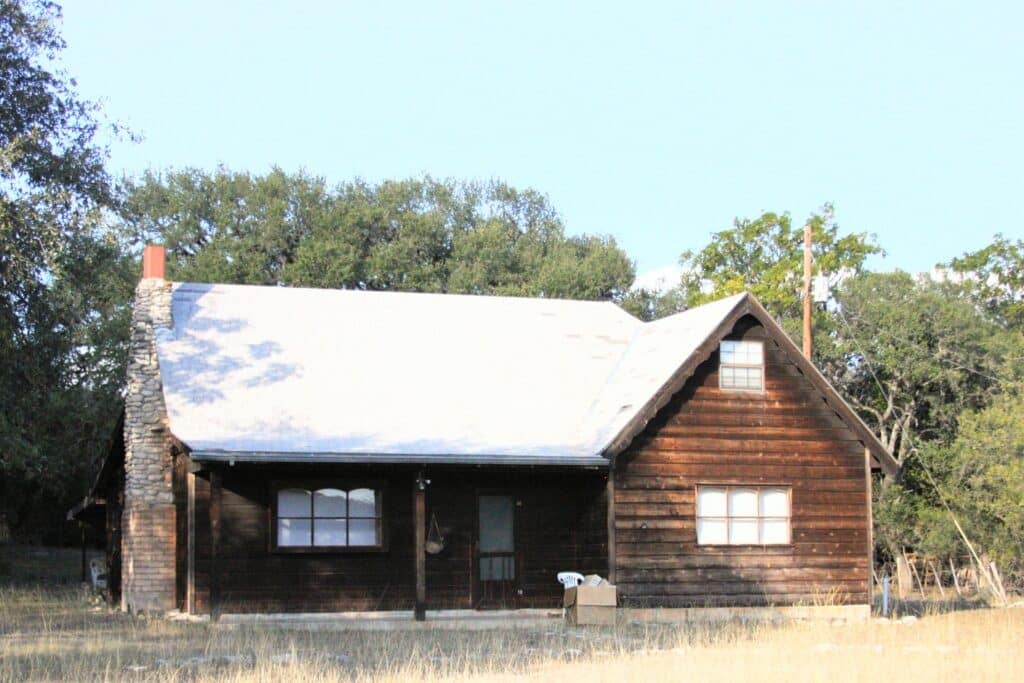
In the beginning, the early days when I started to teach woodworking over and above my days making as a full-time maker, I taught my classes to existing woodworkers because I was asked to. I didn’t know at that point that there was a generation of woodworkers yet to come that would discover the craft but who had no knowledge or experience of woodworking. At that point many seemed to have no desire to engage in it at all. This began to excite me. Until this point, I had never seen anything like that. It was no different than someone discovering a new country, perhaps as yet an unidentified species of something, an animal or a plant. It was almost magical to watch when they saw me inlay a picture frame with a plough plane or cut a dovetail joint with a small tenon saw. For many if not most, it was the first time they had ever engaged with the sights and the sounds of a woodshop; the plane’s swoosh, swoosh, the rasping of the saw. It was an opening of the sensors and the neat thing was that they hoped that they could do such a thing. I often handed a man and a woman a plane and a saw for them to try. Seeing the shavings rise from the throat of the plane the way they did was truly a magical thing.
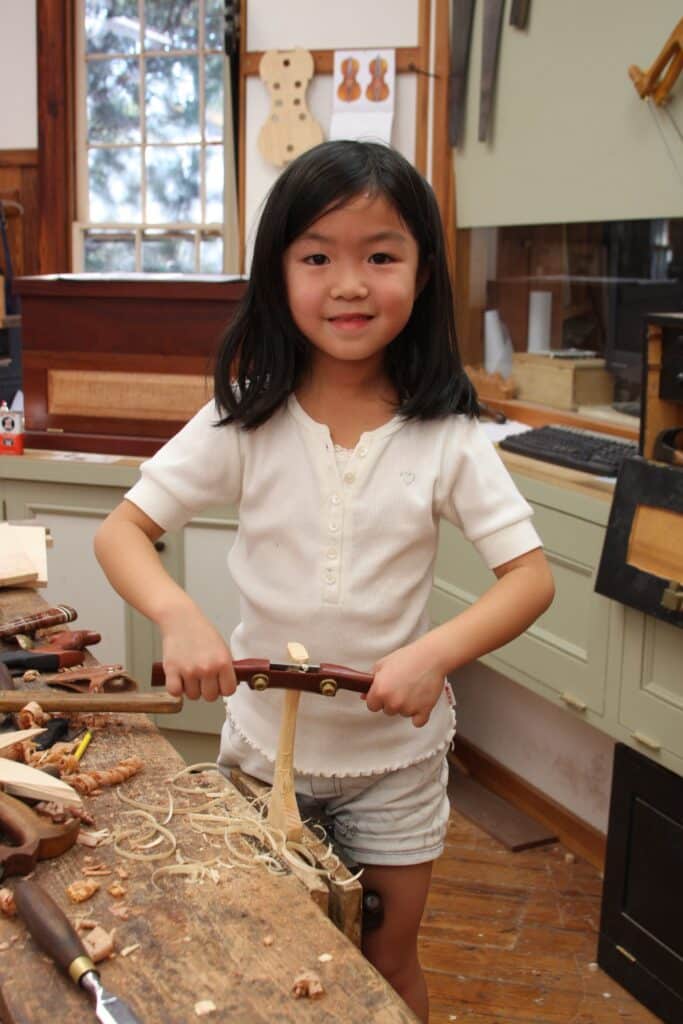
The ripple effect doesn’t begin until someone tosses that single pebble. Did I know there was such a thing as a ‘ripple effect?’ I did, but I didn’t apply it to my future work. I only began to see it after many years of struggling against the tsunami opposing me. For decades I had watched my craft slowly die even though I kept on demonstrating that hand tools were often more efficient than many machine methods if you were prepared to make it happen. My greatest opposition back then was the professional woodworker. Tha amateurs were the ones who had what ot took to get on board with it and then survive to actually preserve the craft and art of my woodworking tradition.
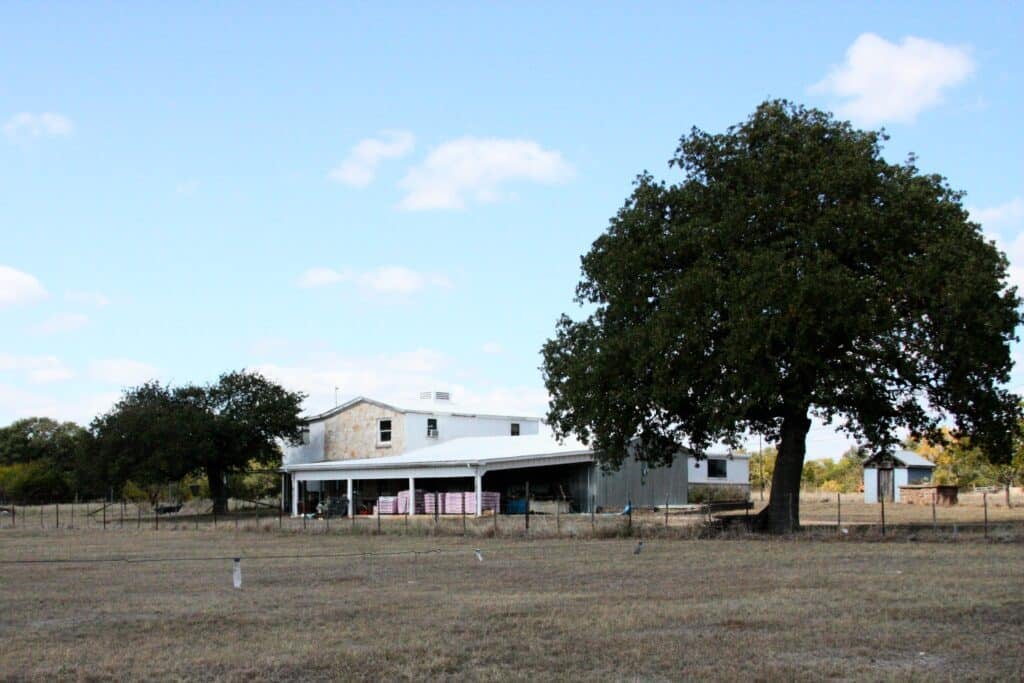
Professionals, so-called, never really showed that much interest in my work. The assumption that traditional meant old-fashioned and outdated never dies. Especially were they dismissive when they saw only hand tools in my workshop. What they could never deny though was the quality in my hand cut dovetails and bench plane work. Disbelieving, they’d ask whether I used a power router, and, “What kind of dovetail jig do you use?” Seeing their faces, and then the further examination of the dovetails, it was as if something simply shut down. I mean, think aircraft engines cutting down at the end of a flight. something prevented them from seeing skilled hand work as a way forward for them to improve their woodworking life.
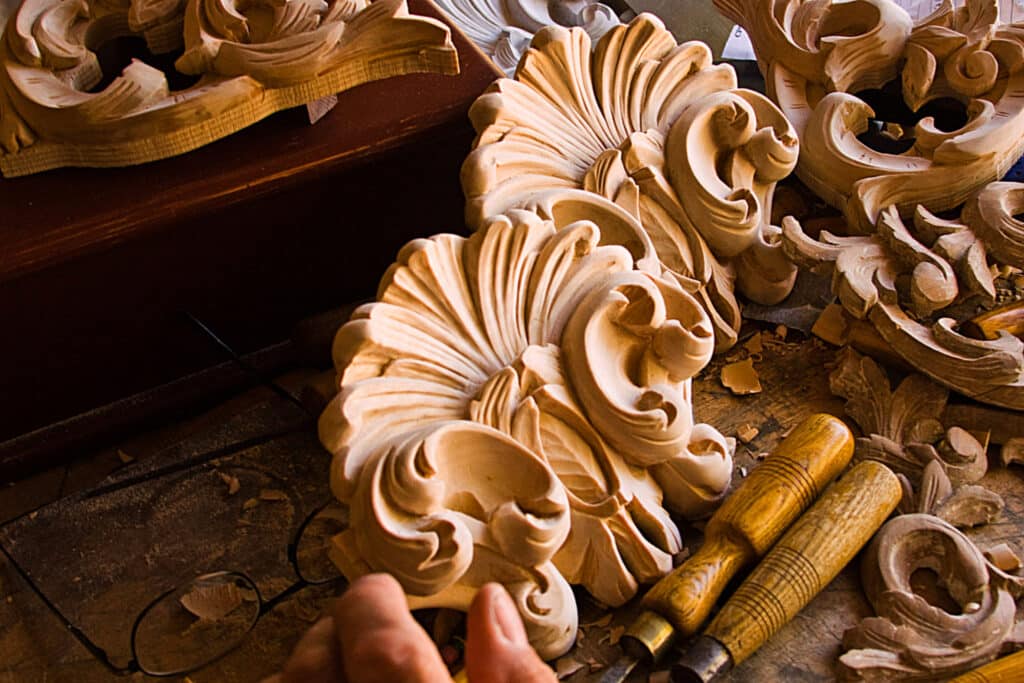
I guess they thought of hand tools as being outmoded and old-fashioned, that they had chosen a more advanced phase in craft development, the progressive way forward. Funny though, they actually saw themselves as a more advanced generation even though they could do so little by comparison. Funny, that! At that point, I never thought I would ever teach beyond those who came to apprentice with me. That was as far as I ever thought to go with it. At that time, I was already developing essential curriculum and teaching for children and teenage boys as the next generation of woodworkers most evenings and weekends. My workshops were always full with kids coming. I always had an open-door policy from 10 am until 4 pm for visiting customers. I started work at 6 am and finished around 10-11 pm, so I always managed a full day’s making no matter what. You see, I felt it was important to have visitors in the shop wherever I could; I wanted to bring them on the journey with me so that they could see how my work was truly skilled woodworking with a high percentage of my work being handwork.
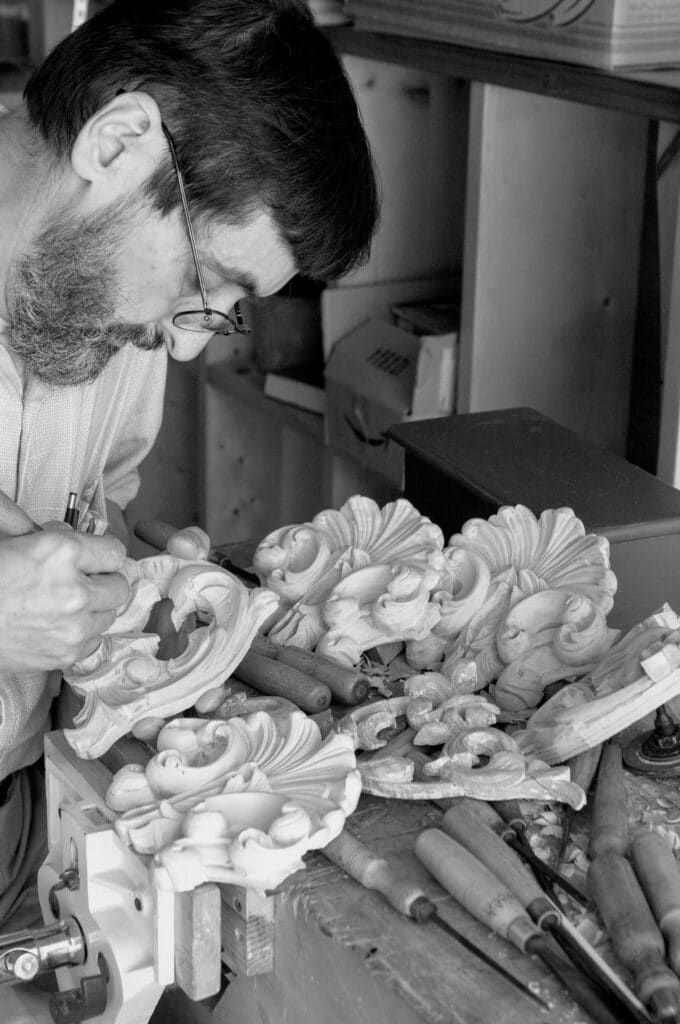
When those interested in woodworking stopped in as well, they asked me if I ever taught classes; something I’d never done nor considered. Part of my open-door policy meant that, for every visitor, I demonstrated how to cut a double dovetail. This took me about five minutes. In the early days, I did not teach beyond these demonstrations. In that era my reach was limited and small, but it was a stepping stone to greater things and a training ground for me. Beyond that, it was the demonstrations that sold my furniture. Little did I know then that I was selling the concept of real woodworking being a possibility for others to satisfy their interest beyond just reading magazines and books about it but by actually doing it for themselves. From that initial beginning, I began my woodworking classes and the weekend classes began. Those who sought to better understand woodworking began to attend the classes and over the years I taught many, many thousands of new woodworkers my craft of hand tool woodworking and particularly furniture making. It matters!
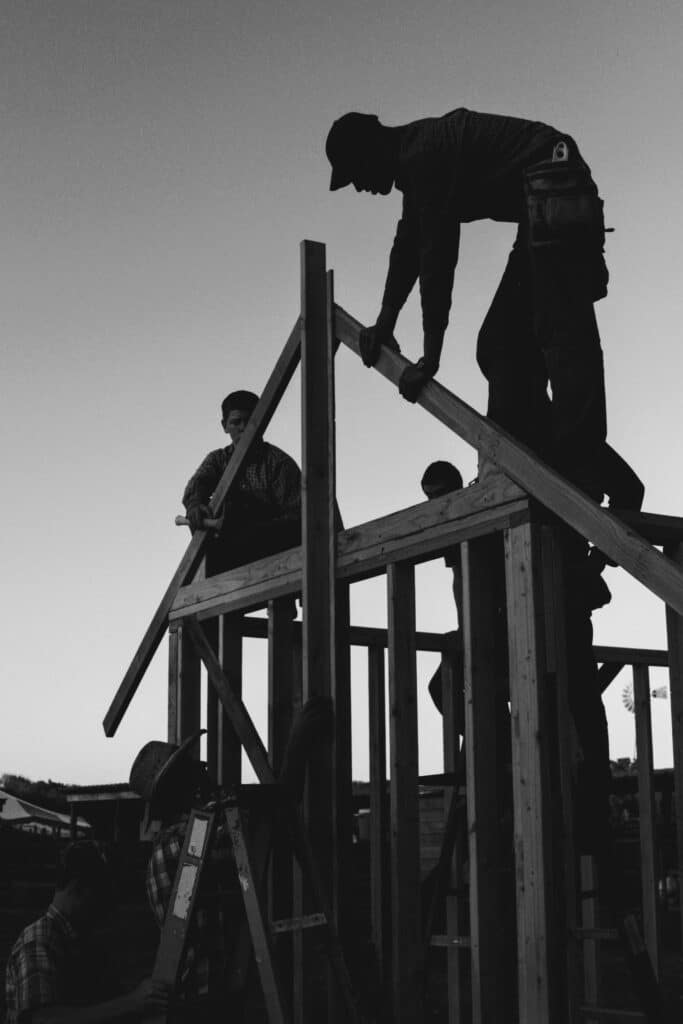
After all these years, decades, I still find myself trying often to put myself in the shoes of others and try to especially think how new woodworkers face taking on my craft might feel as they consider their future steps to include serious woodworking. By this, I mean what to dofirst? One issue is whether to take the obvious route and buy machines. Well, many if not most soon discover they must have a place to set them up and have a place that’s big enough to walk around them to use them. The footprint of a tablesaw may be no more than a meter square, but factor in the outriggers, the fore and after space for feed and take off and the footprint generally quadruples. A bandsaw and a planer takes up similar space and a chopsaw or radial arm saw adds to the massive loss of floor space.
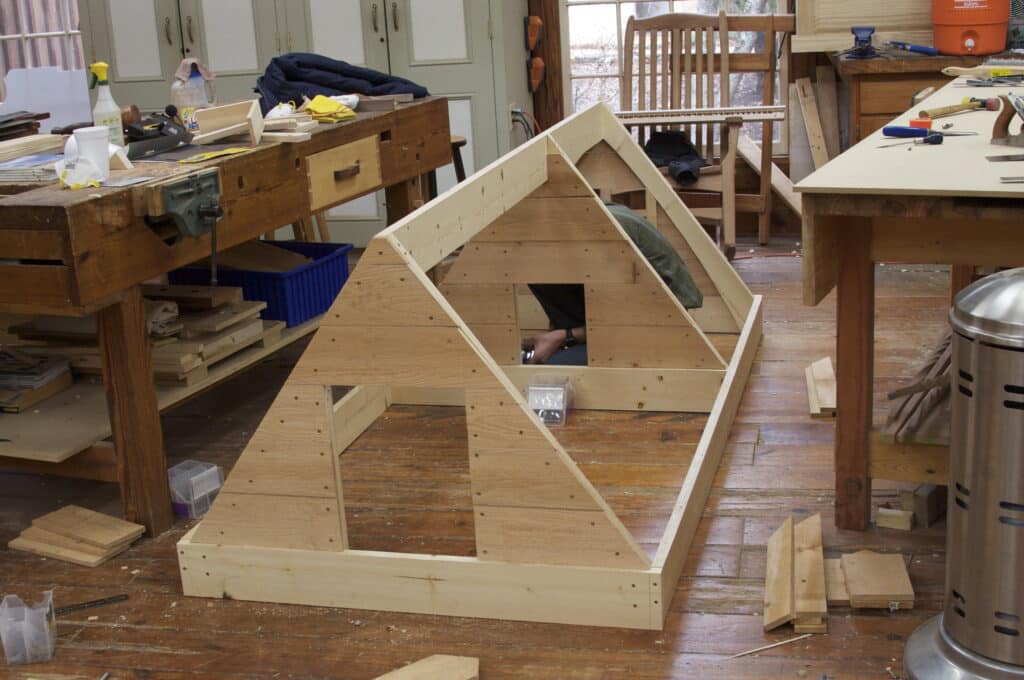
The conclusion for most is that they cannot give such valuable space room for thought. The next question then is how do you buy hand tools without being influenced by a salesperson padding their wallets and telling you you must have a £300 plane or a £200 saw. Then there’s buying the wood and choosing the right wood, building that essential workbench. Knowing what to do, what the first steps are, and so on can be daunting. Most information tells them to buy half a dozen machines. And so we assembled Common Woodworking as commonwoodworking.com so we could tell the truth without selling subscriptions, taking sponsorships, selling classes, tools or equipment. We began our planned strategy to steer, guide and educate new woodworkers to follow a path to the least disappointment with the clearest instruction and information. As it happened, it became the least expensive path to take and the most effective strategy to follow. It worked and it’s continued to equip people around the world!
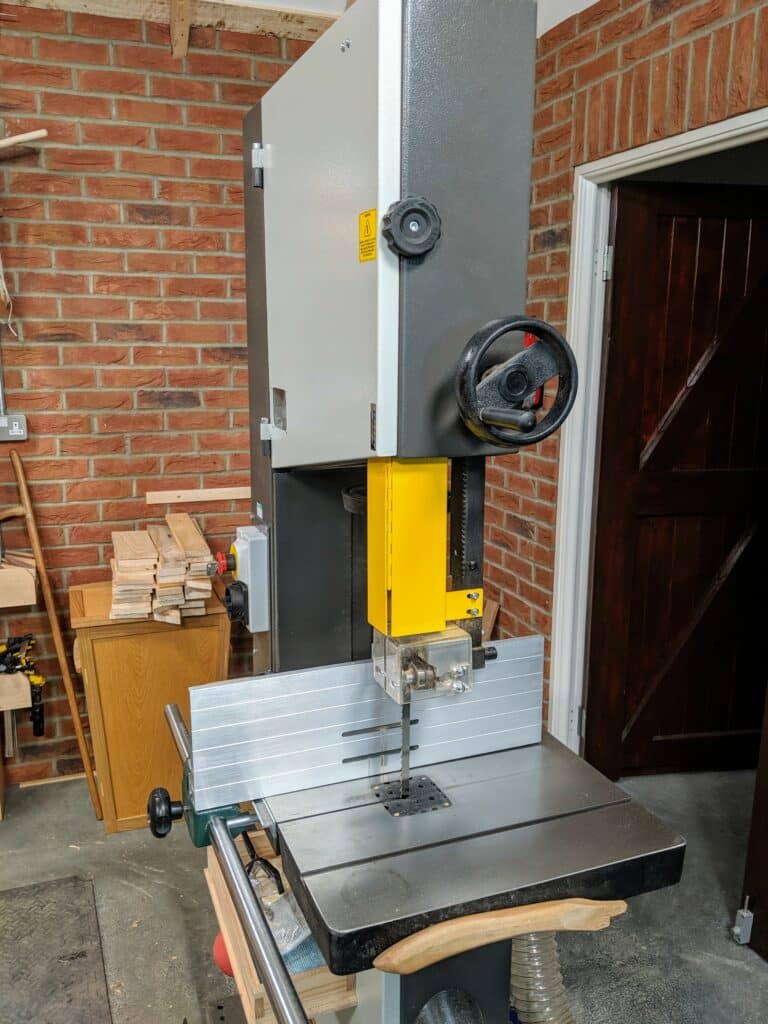
Common Woodworking has become increasingly popular for new woodworkers getting started. This still amazes me with its successes worldwide. The courses on there follow my original work teaching new woodworkers from the very early days back in the 1990s. We receive zero income from other entities by promoting their tools and equipment, taking sponsorship money, wearing branded teeshirts and placing special equipment in camera scenes. We even took the name of the bandsaw because, well, like many disingenuous UK makers these days, and it is a global issue, it may have a British name on it but, as with all bandsaws just about, it’s made in Taiwan. UK manufacturers, like many domestic manufacturers in different countries these days, have zero loyalty to their customers and country in that they sold out the makers to buy cheap labour.
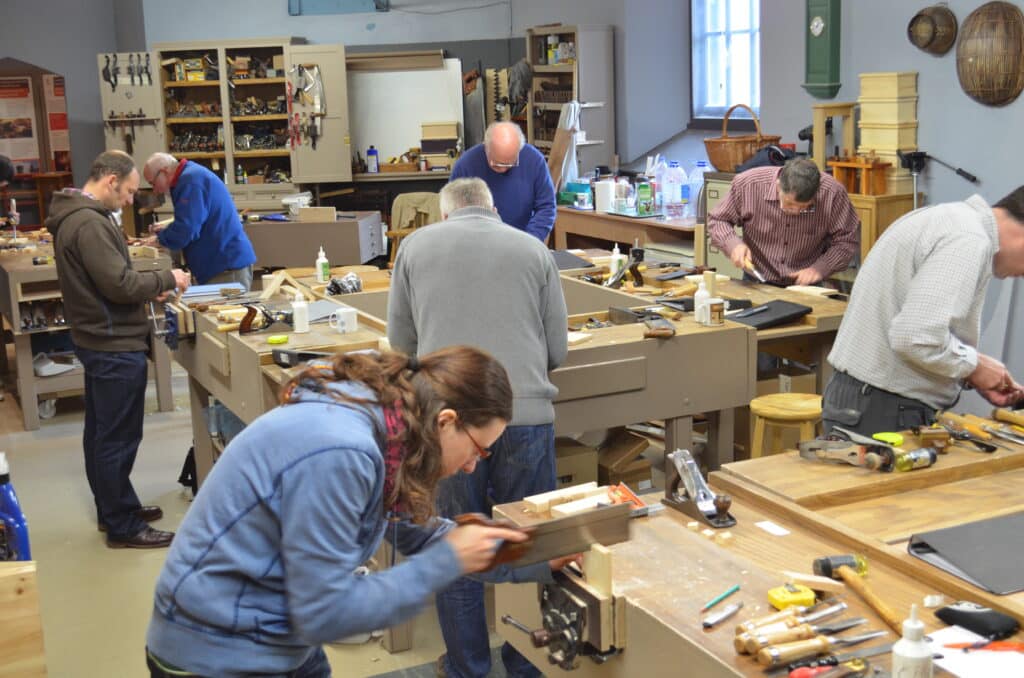
What woodworking has and has always been about for me is developing fine pieces using hand skills. In my early days, before I began teaching but then forever after, I always wanted to present well-tried-and-tested-paths but not because I just liked old-fashioned ways but because there was nothing better that I had ever found. Knowing what was available and adding my own systems and methods and even tools and ideas to it became exciting to me. Today we have become one of the most comprehensive resources for new and seasoned woodworkers to learn from. My foundational course comes from one I have used in one-on-one classes for three decades of teaching woodworkers all around the world. It’s what Common Woodworking is all about. Those hands-on workshops never failed and its all the more successful today as we toggle three decades of teaching to over a decade of teaching via the internet. I never knew it could work so very well. My first workshops back in the 1990s were foundational to my endeavor to dismantle the premise as it was at the time and the message then was that the only way to work with wood was by using machinery alone. On the shelves of friend’s workshops, I always saw planes and saws gathering dust. This is less so today than ever in the last 60 years.
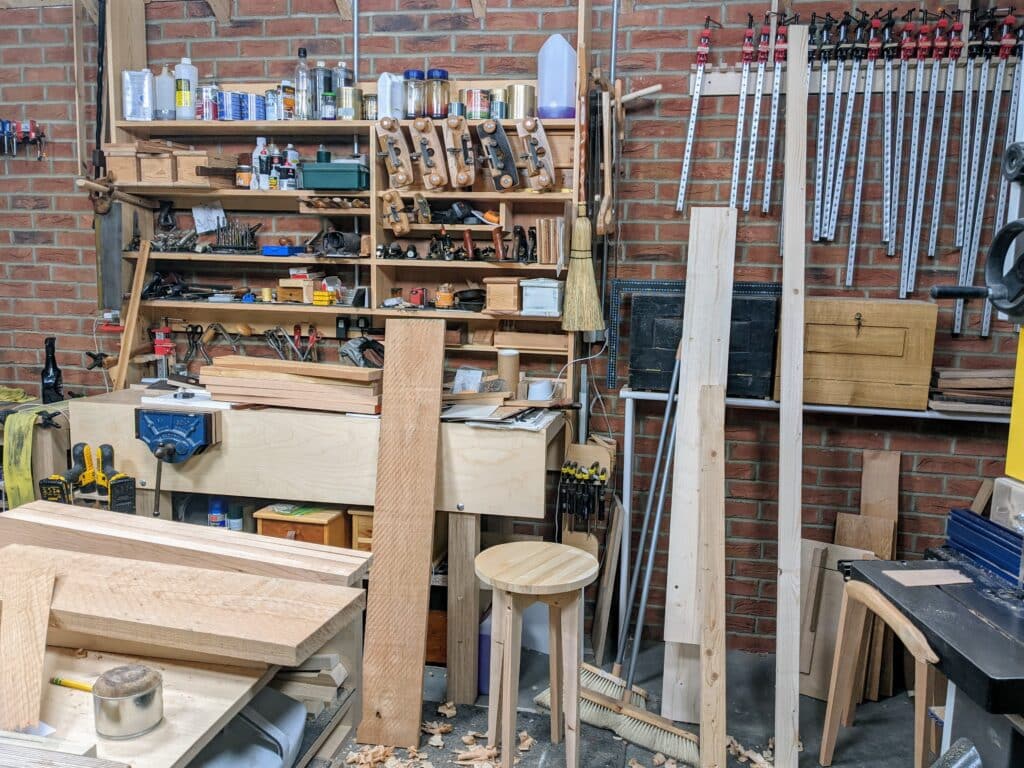
It’s not always easy to change your thinking once you’ve set your course. In my garage workshop, the only buttoned equipment I have by way of a free-standing machine is a 16″ bandsaw. If my garage was four times bigger I would still own but one machine. A bandsaw does everything I need. Primarily, I use this machine to reduce larger sections of wood to the components I need for my project. Planing the wood from there takes only a minute or two per piece — about the same as it takes to walk from one end of a planer to the other to retrieve the wood to pass it through or over and under using a power planer. Is my wood as perfectly parallel as the machine produces? Probably not quite. Is my wood from the power planer as smooth as from my hand plane? No. Wood from powered equipment like planers, tablesaws, bandsaws, etc is never a finished surface. One way or the other, machined wood must be finished more. From the hand plane, it is mostly done.
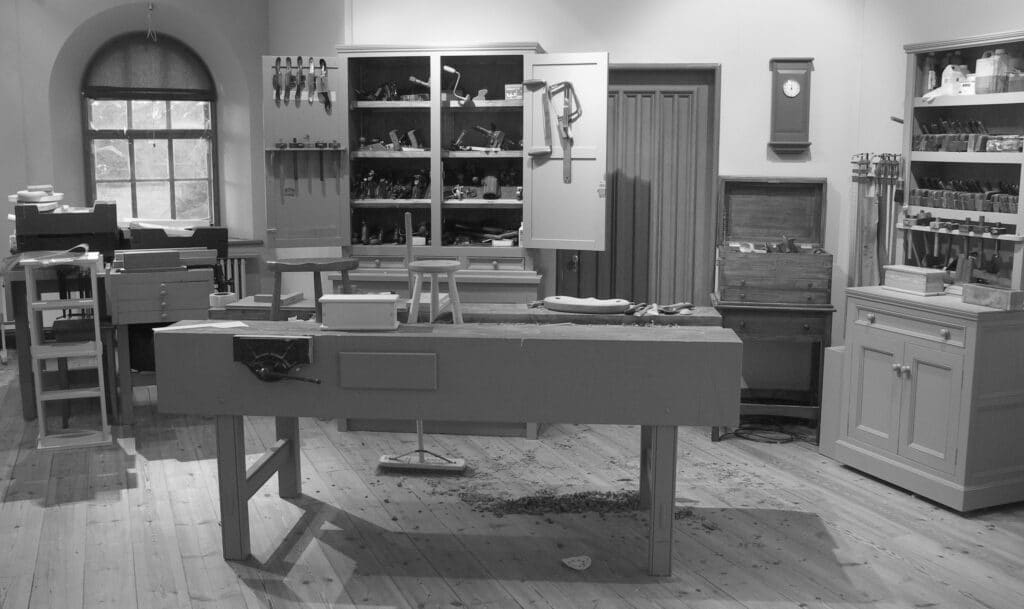
Of course, we are not comparing apples for apples. I’m saying this because the differences are not so massive as many might think, that’s all. As an advocate for handwork rather than machining, my quest is not as most might think, a question of the difference it takes in time for us to prepare our stock. I would say that it is as much if not more about health and exercise as anything. I like to take my exercise throughout the day with muscle I develop specifically as usable muscle for the work I do. Others prefer the gym to develop muscle whether they use that muscle or not and then use machines to ease the work down to as near zero muscle power as possible.
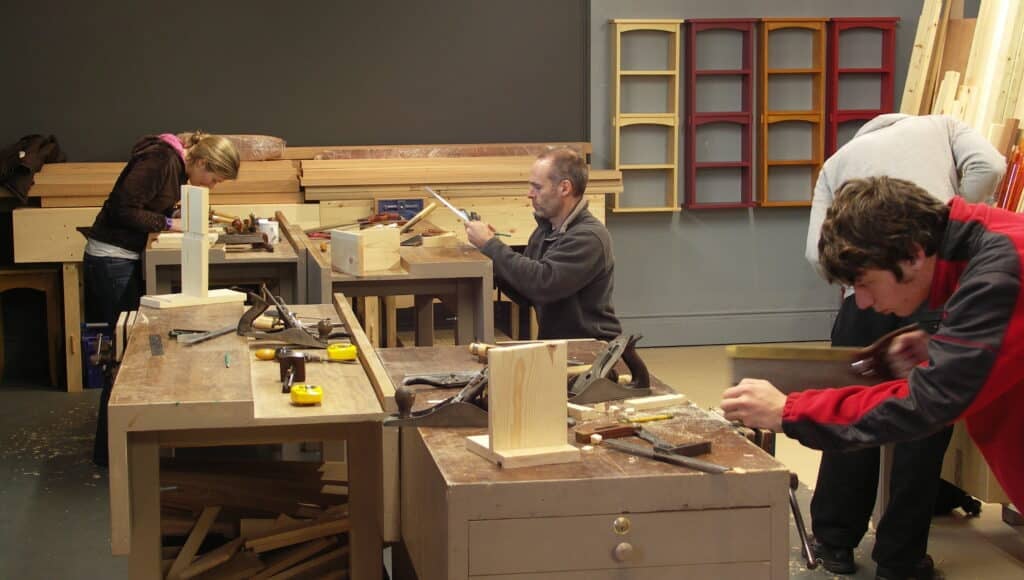
I sometimes see moving to hand tools for some is like getting off the couch to start an exercise program. We’ve gained weight, the body is heavy, it doesn’t want to move and when we take that first step the leg feels like a lead weight. “Run.” you tell your body, but your body is immobilised by months of stagnation. This can be the same for those considering the use of hand tools after using only machines. But presses through that wall of resistance eads to a healthier you. that is what woodworking with hand tools will do for you too!


A most enjoyable post as always Paul. I’m always impressed that an ordinary chap from England made the move to a different continent and, using his hands and the sweat of his brow, made a life for himself and his family. Your story is akin to that of migrants over many generations. I’ve seen this replicated across the world, the incomer who builds their own business. It shows an independent and determined spirit. I’m sure that you could have worked for someone else and have made a good living, but I sense that wasn’t your desire.
I’m still swithering on the bandsaw. I like the idea of it, but I’d need the associated dust collection and so on. Do you use a large dust collector with a big hose? I’m guessing I’d need more than just a shop vac?
I have lots of power tools, but they are all hand held, and most are about to be sold as I don’t use them enough. I also recently bought a hand cranked drill press which needs fixing up, but other than that I think I’ve got enough tools for a lifetime! The only other thing I’m not sure about is a grinding wheel. I’ve managed to get by without one, but there are a few times I’ve been tired of sandpaper and stones when trying to restore an old tool. I do it just often enough that it’s maybe an issue. Do you use powered machines when restoring tools, Paul?
Hello Rico.Thanks for this. If you would allow me, I’m never sure why we call machines tools and you should continue freely of you like the term. I never have because it was introduced to nullify their impact on the working environment and to make them more acceptable. they really don’t qualify because tools need hands and human energy as the tool is more simply the extension of human hands whereas machines were designed and intended to replace human hands, human energy, and human conflict by way of our human failings. It was a major step in the Industrial Revolution to replace human input in industry. Hand tools on the other hand require direct input, thought, energy and heart. Okay. that done,
I do own a grinding wheel but mostly for metal working beyond grinding bevels. I might suggest that you are leaving it too long before going to the coarse level to reestablish the bevel. It should take no more than 3-4 minutes to sharpen a couple of planes, a couple of chisels.
Paul, as always a fine look at choices you made to get to where you are. For the rest of us a fascinating view of a life lived. Thankyou.
Now I’m intrigued by the carvings featured in the article. Is it possible to walk us through your work with them? Some of us are aspiring carvers.
Michael,
You could check out Mary May’s website marymaycarving.com. She has been carving since 1991, and she is a gifted teacher.
Thanks for your reply Paul, much appreciated! I was referring to metal work beyond grinding bevels, I like to restore old tools and grind cambers for scrub planes and so on, so you’ve answered my question! My sharpening, thanks to you and others, is down to the 1-2 minute mark for just regular bevels, I’m definitely at the stage where it isn’t a chore anymore.
As for power tools, I call hand held ones power tools, and free standing ones machines! It won’t be long before we’re hooking them up to our bodies (not me or you of course)!
Rico,
I just recently purchased a bandsaw and it has really sped up my work. It’s great for hand tool work as Paul has mentioned several times. I use to dread having to thickness wood. Now I just run it through the bandsaw and hand plane like Paul shows in his masterclass videos.
I was able to get away with a rigid shop vac/ w a Hepa filter and bag for dust collection. The key is you have to get vacuum to suck up the dust right below the bandsaw table (there are lots of youtube videos on this subject). I ended up using 2.5″ locline for my setup. If you’re going to use the built in dust ports on a bandsaw, you need a dedicated dust collector because a shop vac will simply not move enough air.
I have a dylos particle counter and have confirmed my shop air stays well below any levels of concern (I still wear a mask though).
Thanks Richard, great info!
Hi Rico,
My $0.02 on bandsaws…I started out the Norm Abrams way, with a bazillion machines in my shop. It was not very satisfying, required a lot of room, and way much electric requirements. Thanks to Paul (and other great teachers like Richard Maguire, Megan Fitzpatrick, Chris Schwarz, and others) I’m down to a 14″ bandsaw and a nice little herd of hand tools. It’s a lot more fun. And quiet. And less dangerous.
For dust collection, I have a wall-mounted 1hp dust collector with a 4″ hose. It is mounted on the outside wall in an enclosure. Because it does not exhaust into my shop, I use a 30-micron bag. Don’t need a chip separator because the bandsaw does not create large chips. Coarser bag + no separator = more suction.
The very fine wood dust created by power saws and planers is the most dangerous. I also have two homemade air filters built with furnace filters and box fans. The filters do not need to be changed very often, so the dust collector is doing a good job.
The key for me getting happy with the bandsaw, and not using a table saw or chop saw, was work support. The stock bandsaw table is small and higher than a tablesaw, so the ergonomics are different. I built extended work supports which made it nice and comfortable to use.
I’ve gotten comfortable with hand saws, and use them for cross-cutting and short rip cuts. A nice quiet shop that is safe for visitors and cats and dogs is quite a treat.
Paul,
As a long time reader and watcher, this piece strikes me as revealing the essence of what makes you unique and the reason for your extraordinary success. Above all things, you are ‘Welcoming’. You genuinely invite people into the world you have created, -especially children it seems. But once inside people encounter not just a Master Craftsman, but one with a strong point of view, developed over a lifetime of DOING. That you love what you do is quite evident (and also rare, inviting and somewhat contagious).
You are medicine for a busy and over stressed world, an oasis where people learn that real work with your own hands, heart and mind is both productive and therapeutic. It feels GOOD and brings the pride of craftsmanship to a disposable world.
On a personal note, I never would have thought of a spokeshave as a great first tool for my 5 year old grandson, but after sharpening per your instructions, he was hooked at first use.
Thank You
I remember poking my head in your shop once in Wimberly. I’ve always loved handbuilt furniture and seeing how it’s built was very cool! My great-grandfather was a furniture maker and a farmer and I have some of his pieces. Unfortunately, I was on a student’s budget at the time and just had to browse.
Last couple of days I have been working on little display stand for flower pots on patio, 1/4 and 3/8 inch mortise and tenons in California Redwood and cedar. What fun it has been. And a great distraction from the horrible events taking place in Europe. There was a time I would not have ever tried to use a tenon, now I look forward to these types of challenges every opportunity that presents itself. Thank you Paul for the lessons, confidence in my abilities, workbench and general thinking.
euro
Rico, I’ll just chime in with my own experience here. About that band saw – I own a Record Power BS400 16” model, pretty much the same saw as Paul shows by the looks of it. I also own a CamVac dust collector to go with it. The CamVac unit was chosen because it is vacuum based and therefore the hose diameter does not matter as it does with those howlers with canvas bags as “filters”. It also filters dust down to .5 microns, so it limits the amount of harmful stuff it spews out into the shop air.
I can hook it up to my random orbital sander or my track saw, which both has a pretty small diameter dust port – and it is highly effective in removing the dust.
Another great feature of the CamVac models – I believe Paul has a Record power unit, which does not have this particular feature but are otherwise similar units – is the 2.5” exhaust port which you can make a simple noise baffle from some egg carton foam panels and a length of sewer pipe. The reduction in noise is dramatic! A couple of meters away, and you really don’t need hearing protection (which you should use anyway if the machine is on for some time). Great for sanding at the lathe or making a sanding box for those things you just have to sand.
Now, I am a hand tool guy (thanks in no small part to Paul) first and foremost. I loathe the dust created by machines, so I try to avoid using them as much as I can. But sometimes, they are nice to have (since I already own them).
As for the band saw, I really do not want to be without it. You can resaw a board with a hand saw – I have done that in the past – but it is a lot of work. If you enjoy it, go ahead. It is good exercise. But ripping several meters of 15cm wide oak planks? I do not have time for that (full time job plus preschool children, house and property to look after – it limits shop time). The band saw is a great asset. Not nearly as dangerous as a table saw nor the plume of fine dust around me. If I need to cut a tenon in a hurry, I can rough it on the band saw and fettle with my router plane if that’s the best option.
A good band saw is a great asset in the shop, and if you can get one you won’t regret it. I also recommend the CamVac units because of the filtration and the exhaust ports – which you can vent outside if you really want to get rid of the dust, but the shop is going to get cold that way.
To be clear: I am not affiliated with any brand and my recommendations are based solely on my experiences.
I also have a jointer/thicknesser since I do most of my work with rough sawn planks from a sawmill. Donkey work eliminators, really. And after the thicknesser winds down, my beloved Stanley 4 comes out. 🙂 Can’t beat hand planed surfaces!
Hello Paul. What a beautiful picture of the little lady using a spokeshave. It would seem that if she holds it correctly with both hands, she is out of danger from the sharp blade. Quite charming. And safe.
Yes, she’s 18 now.
Thank you. I let my little lad play with a sharp penknife, explaining how to always cut away from himself. He soon had bloody hands, I guess you can be too young. Now 50, he still holds it against me in jest.
Good evening, Paul et. al.: I was struck by a small line in your post in which you refer to logs stacked on your Texas grounds “waiting to be slabbed.” I would like to know how you slabbed them. I am in a similar position in that I can often have access to a high-quality logs. However, those with portable sawmills here will not set up for just a log or two. As such, I find myself adrift on the subject. Your thoughts?
Thanks for the posting: interesting, as always.
Hello, Paul,
Here’s another Yankee who loves your blog and your videos. I am retired and converting my wood shop from power tools to, mostly hand tools, thanks to your insights.
During your time in Texas, I presume you came in contact with mesquite. I’m curious whether you think it would be a good wood for making hand tools, specifically your wood router plane, and wood bench planes in the Krenov style. It’s very hard, and has very, very low shrinkage, so it would seem like a good candidate for the job. Is the grain in mesquite straight enough to work well for plane-type tools?
Thank you Paul!
The work you have done has paved the way for so many, including myself. When I hit my 30’s a few years ago, I was feeling kind of down, even though my life overall was pretty great. It took me some time to figure out, but what I was missing was “creating” and one thing lead to another and I landed on woodworking. Living in a small apartment, power tools were out of the question. My dad had a powertool shop, THAT was what “woodworking” meant to me for most my life. I saw a video online of hand plane being used and I became so curious. I am one those of people out there, who have learned so much from the free materials and videos you and others have posted online to keep this type of work alive.
So, I just wanted to say thank you, woodworking has become a path for creativity and stress relief, it’s one of the the best things I have ever done for my mental health. Perhaps without you I may have never stumbled upon the joy that is woodworking. Thanks again for everything you have done for the craft and for people like me.
Paul,
Your encouraging remarks about wooden planes in previous blogs prompted me to pick up a Stanley 36 transition(al?) plane for a very reasonable price. The sole needed a little sanding to restore it to dead flat, but everything else from tote to frog to knob were in remarkably good condition. My question for you relates to the size of the mouth: The 36 has a blade width of 2 3/8″ and (after sanding down the sole) it is 5/16″ across. Is that acceptable or do I need to add an insert to tighten it up? If so, what is the preferred size? Any advice will be appreciated.
Paul:
Your life supports what I’ve heard all my life (too many try to get a person to go away from it, as they discount the value of a good man) that it’s the journey that matters most, not the destination.
I love how you pass your skills down to the next, or even further, generation. While some think things can be learned by reading a book, etc.,there is much to be gained from learning from someone who knows the skills developed over a lifetime (not the least of such skills is the art of patience). I won’t devalue learning from a book or video, as that can jumpstart the learning curve. However, one can learn so much more at the feet of a true master. You had the opportunity to experience life in Texas, and they are fiercely independent. Yes, life seems to move at a slower pace in the South. My theory is that has been learned over many years, to survive the sweltering heat. People learn to be efficient to survive. Is it better? It’s just different.
I am a convert (several years ago) from all power tools to mostly hand tools. Boy have I learned much I didn’t know! I will spend the rest of my life learning. Peace and quiet are now key words. Working efficiently doesn’t mean getting in a hurry. At first, I didn’t think so, but efficient work with hand tools is almost as fast as power tools, and so much quieter and peaceful. Even given the choice, I wouldn’t go back.
Thank you, Paul, for a quiet 15 minutes with my coffee this morning while reading this beautiful post! I enjoy posts like this as much as I do your instructional ones. Be well.
I’m slowly realizing the benefits of hand tools over machines. I’ve struggled to get a jointer aligned well enough to joint wood properly. Hours of tedious tinkering only to learn that a small twist of the height adjustment knob changes everything. Then I started looking into hand planes more and how to properly set them up (a few of your videos helped). After buying some older Stanley’s and restoring them, I’m more sold on learning to use these than the stupid $500 jointer I’ve wasted so much time AND WOOD on. Thanks for all you’ve shown the world.
Like many woodworkers, I started my woodworking journey thinking that I need all of the various power tools available to make anything. I busily and happily embraced this style of woodworking and made many nice furniture projects.
I remember going to a wood working show where you had a booth and were demonstrating hand tool techniques. Being intrigued, I enrolled in a dovetail class and was hooked. This started my journey of using hand tools and has reached the point that just last weekend I sold the last of my major power tools. The only thing left is my bandsaw which will be for resawing slabs.
Paul, know that your philosophy and talent has been greatly appreciated by many, least of all me. Thanks for your words of wisdom and instruction.
Hello Scott. Thank you for your encouraging words. My life has had so many twists and turns not the least of which was a wonderful privilege of living and working in the USA. Living back here in the UK since 2009 has indeed left a hole in my heart not being there and especially in Texas, but then the whole of the USA. Every so often I will hear some Brit say something disparaging that starts out with something like, “Well, you know what these Americans are like . . .” And before they can get another word out I answer, “. . .Well, no I don’t and yes I do!” I then go on to say that, “. . . in my experience they are a nation of amazing people that can never be defined by anyone who has not lived amongst them. It’s a nation of nations and I love all nations because all nations are made up the most amazing people !“